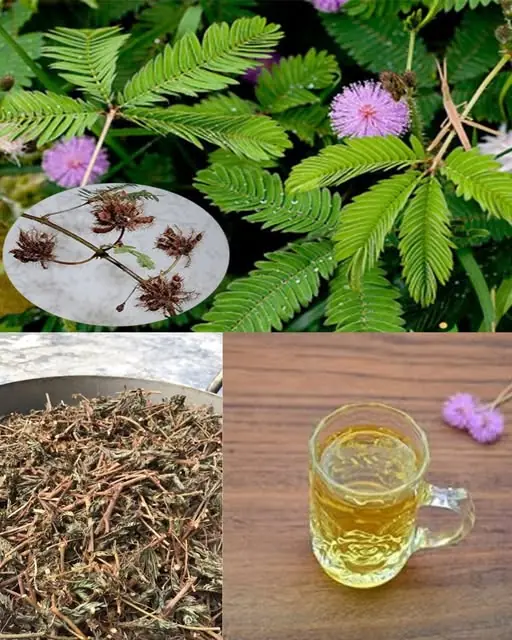
You’re Doing It All Wrong: Here’s the Right Way to Keep Indoor Air Fresh in Winter
As temperatures drop, most of us retreat indoors for warmth and comfort. But sealing ourselves inside also traps stale air and pollutants — a combination that can worsen allergies, asthma, and other respiratory issues.
Many people try to freshen their homes with synthetic air fresheners or scented candles, but these often make matters worse by releasing more pollutants. Instead, here are proven, effective strategies to keep your indoor air clean and healthy throughout winter.
1. Crack Your Windows for 10 Minutes a Day
Even in cold months, briefly opening your windows can dramatically improve air circulation. Just 10 minutes is enough to flush out stale air without significantly cooling your home.
For best results, choose a dry, less-polluted time of day and open windows on opposite sides to create cross-ventilation.
2. Add Air-Purifying Plants
Indoor plants don’t just look nice — some varieties help remove toxins such as formaldehyde and benzene.
Good options include spider plants, snake plants, and peace lilies. Aim for one medium plant per 100 square feet, and keep leaves dust-free so they can work effectively.
3. Skip Synthetic Candles
Paraffin candles release harmful chemicals like benzene and toluene. Instead, choose soy, beeswax, or coconut wax candles scented with essential oils.
Always burn candles in a well-ventilated space.
4. Run Bathroom Exhaust Fans After Showering
Hot showers create humidity and lingering VOCs. Running the exhaust fan for at least 15 minutes helps prevent mold growth and keeps moisture levels in check.
Make sure your fan vents outdoors and clean it regularly.
5. Use a HEPA Air Purifier
HEPA purifiers capture tiny particles such as dust, pollen, pet dander, and smoke—especially useful in winter when windows stay closed.
Choose a purifier that can fully filter your room at least twice per hour, and replace filters as recommended.
6. Keep Humidity Between 30% and 50%
Dry winter air irritates the respiratory system, while excess humidity encourages mold.
Use a hygrometer to track levels and adjust with a humidifier or dehumidifier. Clean devices often to avoid bacteria buildup.
7. Clean and Dust Regularly
Dust can harbor mites and allergens. Use a vacuum with a HEPA filter and wipe surfaces with a damp cloth to prevent particles from becoming airborne.
Don’t forget neglected spots like window sills, ceiling fans, and baseboards.
8. Choose Natural Cleaning Products
Many traditional cleaners release VOCs. Instead, select natural, non-toxic options or make your own with simple ingredients like vinegar, baking soda, and lemon juice.
9. Monitor Carbon Monoxide
Carbon monoxide is odorless and potentially deadly. Install CO detectors near bedrooms and areas with fuel-burning appliances.
Test monthly, replace batteries every six months, and maintain appliances regularly.
10. Maintain Your HVAC System
A well-maintained HVAC system reduces dust, mold, and allergens. Change filters every 1–3 months and schedule yearly inspections.
Cleaning ducts periodically can further improve air quality.
11. Use Essential Oil Diffusers Carefully
Essential oils can freshen your home naturally, but use them sparingly.
Add only a few drops at a time, avoid running diffusers continuously, and ensure good ventilation—especially if anyone in the home is sensitive to strong scents.
News in the same category


Serial Brooklyn dine-and-dash influencer caught avoiding the bill in dramatic video as local eateries wise up to scheme

A-list actress looks completely unrecognizable in new ‘Hunger Games’ trailer

Joey and Jesse Buss fired by Lakers after $10 billion sale as family feud with Jeanie explodes

I’M A CELEB HAD A SPECIAL ‘SMOKO RULE’ THAT ONLY APPLIED TO ONE LEGENDARY STAR

WHERE TO WATCH JOEY’S FRIENDS SPINOFF AS LOST EPISODES RELEASED AFTER 19 YEARS

PARIS JACKSON MAKES SHOCKING CLAIM ABOUT $10,000,000 WORTH OF DAD MICHAEL'S WILL

GRAPHIC VIDEO SHOWS CARDI B HAVING UMBILICAL CORD BEING MADE INTO JEWELLERY

A Daughter Loses Over 50 Pounds To Donate A Life-Saving Kidney To Her Dad

Walmart Cashier’s Random Act Of Kindness Towards Woman With Cerebral Palsy Will Absolutely Touch Your Heart

Co-workers Surprise Adopted Colleague With African Inspired Celebration After Tracing Roots Back to Africa

‘Jada Bout to Set That Red Table’: Jada Pinkett Smith Fans Warn Rapper Yo-Yo Over Her Shocking Confession About Tupac

‘Go Back Home Friend’: Vince Herbert’s Slim, Unrecognizable New Look Has Fans Telling Tamar Braxton It Might Be Time to Spin the Block

Grab A Tissue Before Watching This Father And Son Reunite After 37 Years

My Nana Taught Me a 1-Minute Hack to Remove Sticky Jar Labels — With Zero Effort

Actor Brian Tyree Henry Has Heartwarming Reunion With Morehouse Professor Who Inspired Acting Career

Whoa, I Had No Idea This Is Why Milk Jugs Have That Dent

I Didn’t Know This Bee Sting Trick—My Dad Swears By It

All The Feels: 6-Year-Old Overcome With Emotion Watching His Mother Walk Down The Aisle

Actress Ayo Edebiri Honored With Her Own Day in Hometown of Boston
News Post

This ancient seed oil may help calm knee pain better than Tylenol, study suggests

This vitamin deficiency could be raising your colorectal cancer risk — and half the world is low

Tomato Extract: Better And Safer Blood Thinner Than Aspirin

10 warning signs your kidneys are failing (symptoms most people don’t know)

10 Subtle Symptoms of Clogged Arteries You Shouldn’t Ignore

Yarrow: A Timeless Herbal Ally with Amazing Health Benefits

The Digestive Benefits of Mimosa Pudica: A Natural Gut Cleanser

The Stone Breaker Plant: Nature’s Remedy for Kidney Stones

Secret Tips for Growing Healthy and Productive Clove Plants

The Remarkable Benefits and Uses of Mullein Leaves

Meghan Markle speaks out after Balenciaga designer revealed she invited herself to Paris fashion week

Serial Brooklyn dine-and-dash influencer caught avoiding the bill in dramatic video as local eateries wise up to scheme

A-list actress looks completely unrecognizable in new ‘Hunger Games’ trailer

Joey and Jesse Buss fired by Lakers after $10 billion sale as family feud with Jeanie explodes

I’M A CELEB HAD A SPECIAL ‘SMOKO RULE’ THAT ONLY APPLIED TO ONE LEGENDARY STAR

Tips to clean shiny enamel at home without spending a penny

WHERE TO WATCH JOEY’S FRIENDS SPINOFF AS LOST EPISODES RELEASED AFTER 19 YEARS

PARIS JACKSON MAKES SHOCKING CLAIM ABOUT $10,000,000 WORTH OF DAD MICHAEL'S WILL

How to help you travel thousands of miles without getting motion sickness
